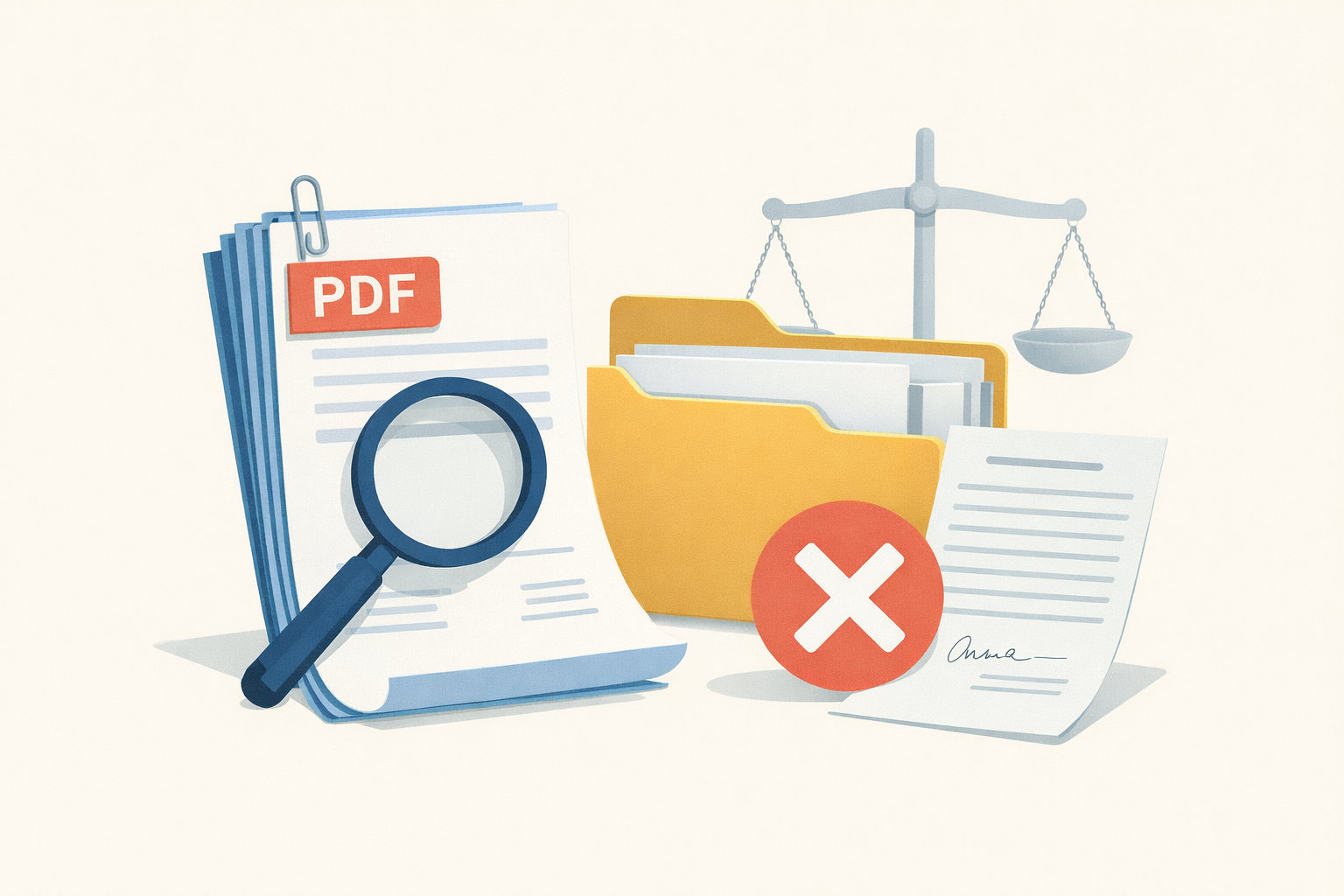You can dramatically improve your odds in litigation and control legal costs by embedding robust audit trails and metadata from day one. These mechanisms let you prove who did what, when, and how. And they offer a quantifiable return via lower review costs, fewer sanctions, and stronger defensibility.
Have you ever wondered why opposing counsel demands full metadata or challenges your chain of custody? The answer lies in how courts and regulators value audit trails and metadata as the backbone of defensibility. Today, we're taking a closer look at how you can leverage these tools to maximize the ROI of eDiscovery tools, enforce defensible data collection, and build a credible foundation before budget meetings or in court.
What Is the Difference Between Audit Trail and Metadata?
Audit trails and metadata are often mentioned together, but they serve different purposes. Metadata captures the static details of digital information. It includes the author's name, creation date, file type, and modification history.
Metadata in legal discovery is like the fingerprint of a file, giving legal teams context and proof of authenticity. Without it, lawyers lose the ability to confirm when or how data was created.
An audit trail tracks every user action linked to a file. It logs when users open, modify, or delete information. Audit trail importance grows during litigation because it documents accountability and the chain of custody. Audit trail legal technology allows teams to reconstruct the entire sequence of events to verify proper handling of evidence.
Together, they form the basis for defensible data collection.
What Are the Four Different Types of Audit Trails?
Audit trails come in several forms, each offering a different view of how information moves through a system. The four main types of audit trails are:
- User activity
- System-level
- Application-level
- Record-level trails
User Activity
User activity audit trails track the actions of individuals. They show when someone logs in, accesses files, or makes changes. It's often the first thing reviewed during an investigation or audit because it reveals patterns of behavior and potential misuse.
System-level
System-level audit trails monitor the performance and health of an entire system. They document events like software updates, crashes, or system errors. These records are valuable during litigation when proving that a platform was stable and functioning properly during data handling.
Application-level
Application-level audit trails capture what happens inside specific software tools. In eDiscovery, for instance, they log every document uploaded, searched, or tagged within the system. This level of detail supports defensible data collection by showing that evidence was processed accurately.
Record-level
Record-level audit trails document every change made to an individual file or database entry. They preserve the most granular layer of information, confirming who made each edit and when it occurred.
The ROI of Audit Trails and Metadata
The return on investment from strong audit trails and metadata isn't just about legal protection. It's about saving money, reducing risks, and improving operational efficiency.
The financial impact can be seen through three key benefits:
- Faster case resolution
- Reduced legal costs
- Stronger compliance protection
Faster Case Resolution
Faster case resolution happens when metadata and audit trails make document review smoother. When data is clearly tracked and labeled, attorneys spend less time verifying its accuracy. Metadata in legal discovery also helps identify relevant information more quickly, cutting down the number of hours billed for document searches and review.
Reduced Legal Costs
Reduced legal costs come from avoiding unnecessary disputes. When a team can present clear audit trails showing proper data handling, opposing counsel has less ground to question authenticity.
It decreases the likelihood of expensive challenges or sanctions. Over time, these small wins add up to a measurable ROI of eDiscovery tools.
Stronger Compliance Protection
Stronger compliance protection is another source of return. Audit trails and metadata act as proof that company policies were followed during data collection and retention.
That evidence supports defensibility strategies and can prevent regulatory penalties. Investing in cost-saving audit methods early means fewer surprises later and greater control during litigation or audits.
Frequently Asked Questions
Why Are Audit Trails Critical for eDiscovery Defensibility?
Audit trails are the foundation of eDiscovery defensibility. They provide a detailed record of every action taken during data collection and review.
When a legal team can show when a file was accessed, who viewed it, and what changes were made, it strengthens the argument that evidence was handled properly.
Transparency builds trust in the process and prevents claims of data alteration. Courts often rely on these logs to confirm that information presented in court is authentic. Without audit trails, it becomes much harder to defend how data was collected and used.
How Does Metadata Improve ROI Beyond Legal Contexts?
Metadata plays a role far beyond litigation. It supports information management, data organization, and compliance across departments. When metadata in legal discovery is handled correctly, it speeds up searches, reduces duplication, and improves workflow efficiency.
These gains reduce employee time spent on manual tasks, which improves the ROI of eDiscovery tools. Businesses also use metadata to manage retention policies and reduce storage costs, turning what was once a legal safeguard into a company-wide advantage.
What Are the Risks of Ignoring Metadata and Audit Trails?
Ignoring audit trails and metadata can expose a company to serious risks. Missing data records may cause courts to question whether information was tampered with or deleted.
A lack of transparency can result in sanctions, lost cases, or reputational harm. From a financial standpoint, poor defensibility strategies often lead to higher costs during document review and longer case timelines. Without a clear record of defensible data collection, organizations lose control over both compliance and cost predictability.
ROI Boosting Techniques for Legal Teams
Strong audit trails and metadata turn defensibility into measurable value. They protect evidence, lower legal costs, and improve compliance.
At Logikcull, we make discovery simple, fast, and vendor-free. Our platform lets you manage eDiscovery in-house, cut unpredictable costs, and keep clients happy. With drag-and-drop setup, Culling Intelligence, and lightning-fast document review, you can focus on your case, not the tech.
Get in touch today to find out how we can help with your defensibility.




